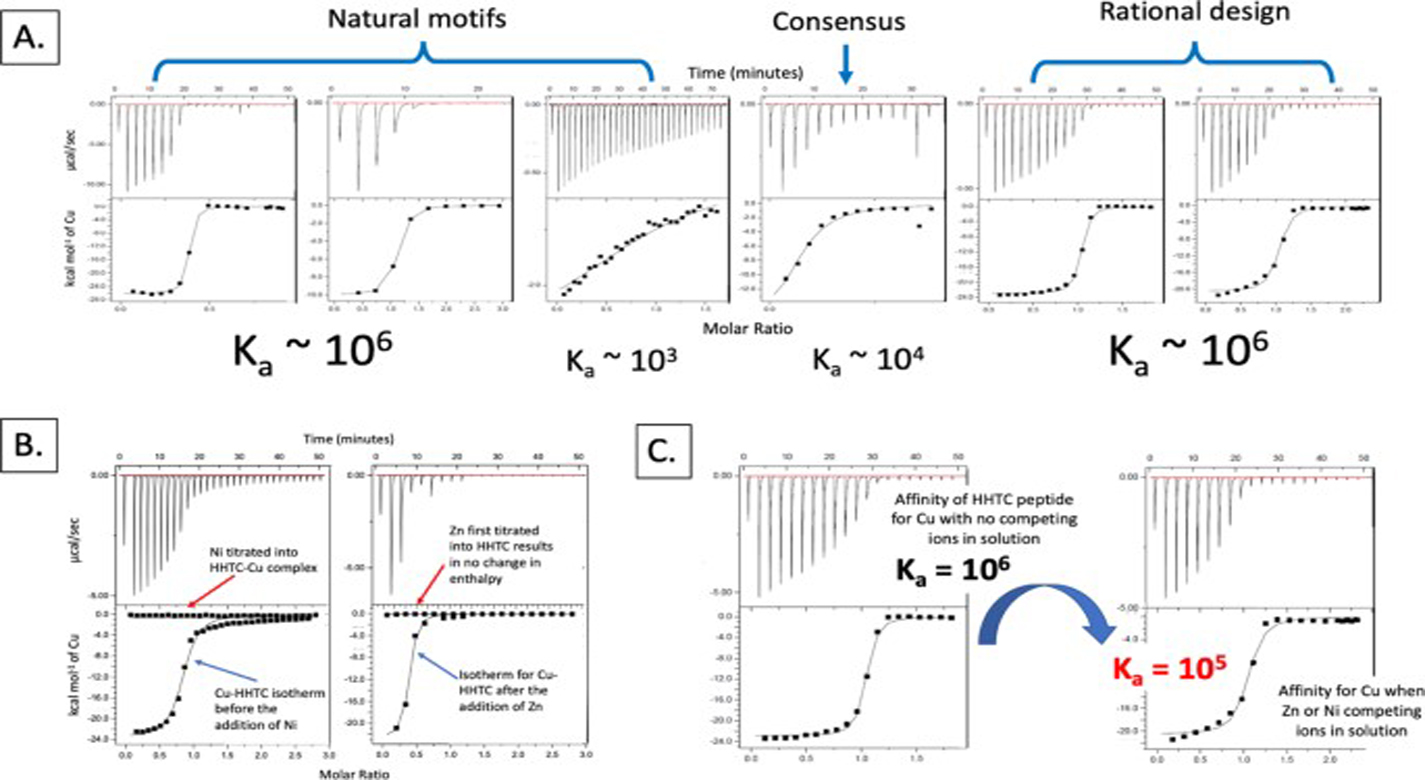Completely biodegradable filtration system for waste metal recovery from aqueous solution
Environment
Completely biodegradable filtration system for waste metal recovery from aqueous solution (TOP2-295)
Functionalizing biological substrates with bioengineered peptides to bind targeted molecules
Overview
Rapid socio-economic development and technological advancement has made the hazardous chemical components of end-of-life electronics waste (e-waste) an imminent challenge. Conventional extraction methods rely on energy-intensive processes and are inefficient when applied to recycling e-waste or waste streams that contain mixed materials and small amounts of metals. NASA Ames Research Center has developed an inexpensive biological approach to removing or adsorbing a target substance or material, for example a metal, non-metal toxin, dye, or small molecule drug, from solution. Using a substrate such as fungal mycelium or chitin, with a peptide, the target substance is isolated and removed or recovered. This approach has a variety of useful applications, from cleaning water sources or recovering chemicals from aqueous solutions to minimize waste.
The Technology
There is a significant need for an inexpensive biological approach to recover specific, targeted metals and other target materials in e-waste or other aqueous solutions that requires minimal input of resources, including energy. This invention is a method of removing or adsorbing a target substance or material, for example, a metal, non-metal toxin, dye, or small molecule drug, from solution, by functionalizing a substrate with a peptide configured to selectively bind to the target substance or material and to bind to the substrate. The substrate is fungal mycelium, and the naturally-occurring or bioengineered peptide is called a target-binding domain, which is chemically bonded to a selected solid substrate. The target chemical species binds to the target-binding domain and is removed from solution. The target can be any chemical species dissolved or suspended in the solution. Capture of the target by the substrate can isolate and allow removal of the target substance from solution, or for utilization in water filtration, or recovery of targeted chemical species from solution, particularly aqueous solution applications. The peptides used include (i) fusion peptides and/or proteins containing metal-binding domain sequence and optionally containing substrate-binding domain sequence; (ii) fusion peptides/proteins containing a metal-binding domain and a chitin-binding domain; and (iii) nucleic acids encoding fusion peptides and/or proteins containing metal-binding domain sequence. The technology enables simple scale up to a level that could be successfully implemented in an environment with limited resources, such as on a space mission or on earth in developing countries with poor access to clean water.


Benefits
- Cost-effective - Non-toxic way to recover metals and other materials in aqueous solution. The substrate, such as fungal mycelium, is extremely inexpensive to produce
- Scalable - Benefits of using mycelium material, as compared to flagella-based or cellulose filtration tools, is that it leverages the concept of economies of scale, and presents an entirely feasible option of scale-up of this technology
- Target-binding is selective when the target-binding domain exhibits a higher binding affinity for one target species than for a structurally or chemically related target species
- Can be employed to form mycelium into a variety for shapes and structures for use as substrates
- Disposal is non-toxic to the environment and could include decontamination with heating and or release of any toxic bound substances and use as a fertilizer or even building material
Applications
- Water filtration applications and removal of other impurities from water including but not limited to antibodies, dyes, and other chemicals that can be directly or indirectly bound to a peptide domain
- Bioremediation and biomining applications in terrestrial and extra-terrestrial environments
- Electronics/computer industry
- Aerospace industry - Aircraft waste
- Mine tailings and industrial wastewater
- Development of chitin biosensors, conjugation with fluorophores
- Metal recovery: Removal of metals, for example, from wastewater, mine tailings and primary metal deposits on or off planet (e.g., asteroids, lunar and Martian materials)
Technology Details
Environment
TOP2-295
ARC-18467-1
https://www.nature.com/articles/s41598-019-52778-2
|
Tags:
|
Similar Results

Activated Metal Treatment System (AMTS) for Paints
PCBs have been shown to cause cancer in animals and to have other adverse effects on immune, reproductive, nervous, and endocrine systems. Although the production of PCBs in the United States has been banned since the late 1970s, many surfaces are still coated with PCB-laden paints. The presence of PCBs in paints adds complexity and expense for disposal. Some treatment methods (e.g., use of solvents, physical removal via scraping) are capable of removing PCBs from surfaces, but these technologies create a new waste stream that must be treated. Other methods, like incineration, can destroy the PCBs but destroy the painted structure as well, preventing reuse.
To address limitations with traditional abatement methods for PCBs in paints, researchers at NASAs Kennedy Space Center (KSC) and the University of Central Florida have developed the Activated Metal Treatment System (AMTS) for Paints. This innovative technology consists of a solvent solution (e.g., ethanol, d-limonene) that contains an activated zero-valent metal.
AMTS is first applied to the painted surface either using spray-on techniques or wipe-on techniques. The solution then extracts the PCBs from the paint. The extracted PCBs react with the microscale activated metal and are degraded into benign by-products. This technology can be applied without removing the paint or dismantling the painted structure. In addition, the surface can be reused following treatment.

Compact System and Method for Treating Urine and Other Wastewater
SAMBR is a hybrid technology, coupling conventional biological carbon and nitrogen removal and ultrafiltration tubular membranes, capable of nitrogen conversion and removal for water purification and resource recovery. Adapted from a conventional Modified Ludzak-Etinger (MLE) design, Ammonia Oxidizing Bacteria (AOB) nitrify ammonium into nitrate under oxic conditions. An anoxic zone, containing Nitrifying Oxidizing Bacteria (NOB), denitrify the nitrate into diatomic nitrogen that then off-gasses into the atmosphere. By adjusting the active oxic and anoxic zones a blend of nitrogen conversion and removal can be tailored to suit the mission objectives.
The treated wastewater is then subjected to membrane filtration to provide a barrier of pathogens and retain active biomass. The membrane permeate produced is a high-quality, particulate free effluent that is rich in nutrients for fertigation (irrigation + fertilizer) applications or can be easily treated downstream to produce drinking water.

Filtering Molecules with Nanotube Technology
This water filtration innovation is an acoustically driven molecular sieve embedded with small-diameter carbon nanotubes. First, water enters the device and contacts the filter matrix, which can be made of polymer, ceramic, or metallic compounds. Carbon nanotubes within the matrix allow only water molecules to pass through, leaving behind any larger molecules and contaminants. The unique aspect of the technology is its use of acoustics to help drive water through the filter.
An oscillator circuit attached to the filter matrix propagates acoustic vibration, further causing water molecules to de-bond and move through the filter. This use of acoustics also eliminates dependence on gravity (and thus filter orientation) to move water through the device. When water exiting the system diminishes to a pre-determined set point, a cleaning cycle is triggered to clear the sediment from the inlet of the filter, reestablishing the standard system flow rate. Unlike other filtration systems, flushing of the filter system is not required. The combination of acoustics and small-diameter carbon nanotubes in this innovation make it an effective and efficient means of producing contaminant-free, clean water.

Contaminated Water Treatment
This invention is a system and associated method that is a two step process. It provides a contaminant treatment pouch, referred to as a urine cell or contaminant cell that converts urine or another liquid containing contaminants into a fortified drink, engineered to meet human hydration, electrolyte and caloric requirements. It uses a variant of forward osmosis (FO) to draw water from a urine container into the concentrated fortified drink as part of a recycling stage. An activated carbon pretreatment removes most organic molecules. Salinity of the initial liquid mix (urine plus other) is synergistically used to enhance the precipitation of organic molecules so that activated carbon can remove most of the organics. A functional osmotic bag is then used to remove inorganic contaminants. If a contaminant is processed for which the saline content is different than optimal for precipitating organic molecules, the saline content of the liquid should be adjusted toward the optimal value for that contaminant.

Electrochemical Sensors Based on Enzyme-Linked Immunosorbent Assay
NASA’s electrochemical Enzyme-Linked Immunosorbent Assay (ELISA) microelectrode array biosensor advantageously incorporates a microbead detection construct, coupled with a magnetic immobilization construct, which substantially increases the signal sensitivity of a sensor. The magnetic immobilization construct draws the microbead detection construct to an electrode detection surface, enhancing signal sensitivity. By concentrating the signaling molecules close to the electrode detection surface, electrochemical redox cycling is achieved by reducing the distance between the two, allowing for regeneration of reporter molecules.
Whereas a traditional ELISA testing exhibits five to ten signaling molecules per probe molecule binding event, the present electrochemical ELISA-based biosensor testing exhibits up to 4,857 signaling molecules per probe molecule binding event. The model bead construct exhibits a more than 6.75-fold in increased measured signal, and more than 35.7-fold improvement in signal sensitivity. When compared to traditional optical ELISA, the present invention improves the limit of detection by up to a factor of 60.5.
NASA’s electromagnetic ELISA-based biosensor can be used for the detection of SARS-CoV-2 virus to enhance Covid-19 testing during the early phases of infection. The technology may also be modified to detect other biomarkers.



